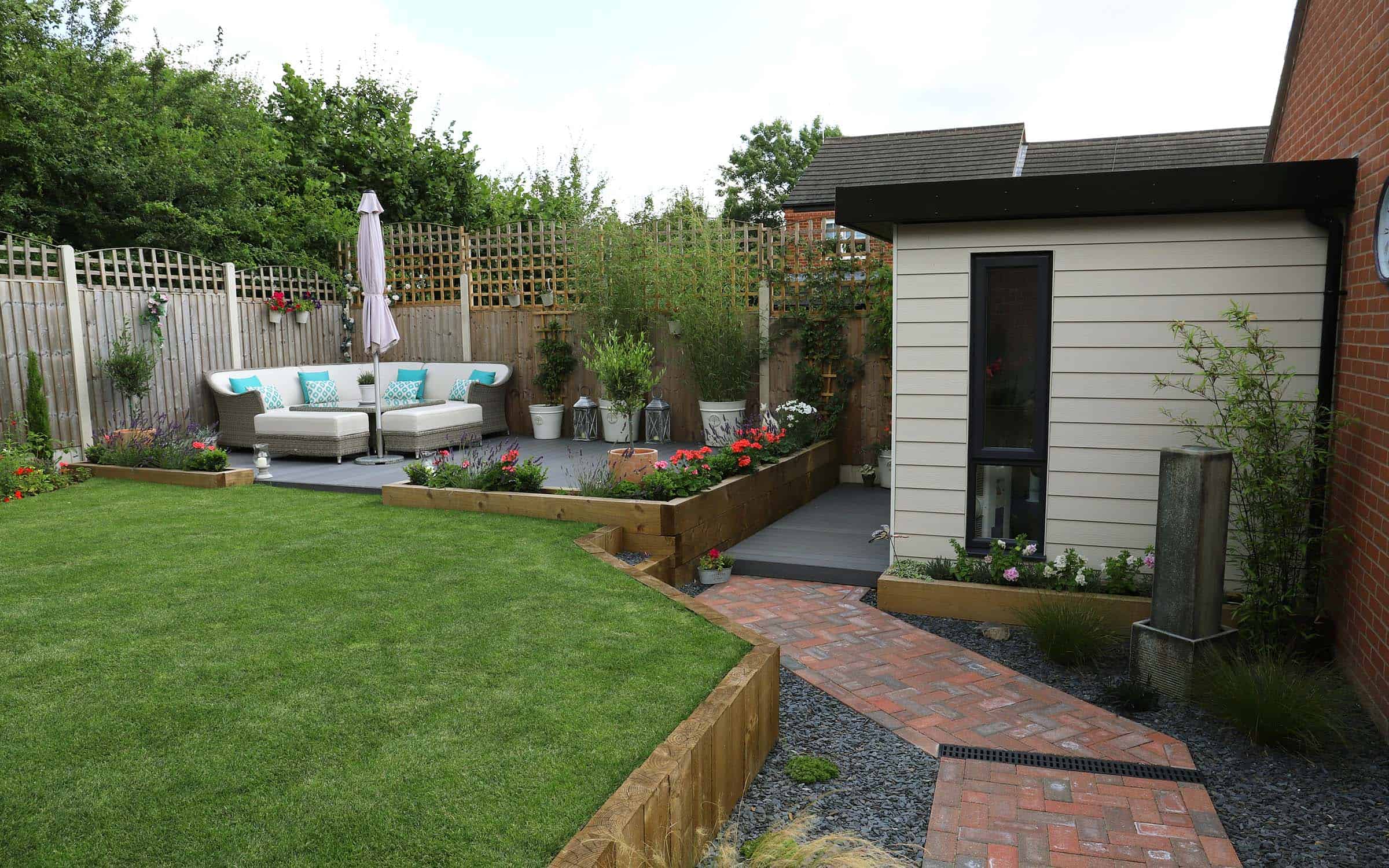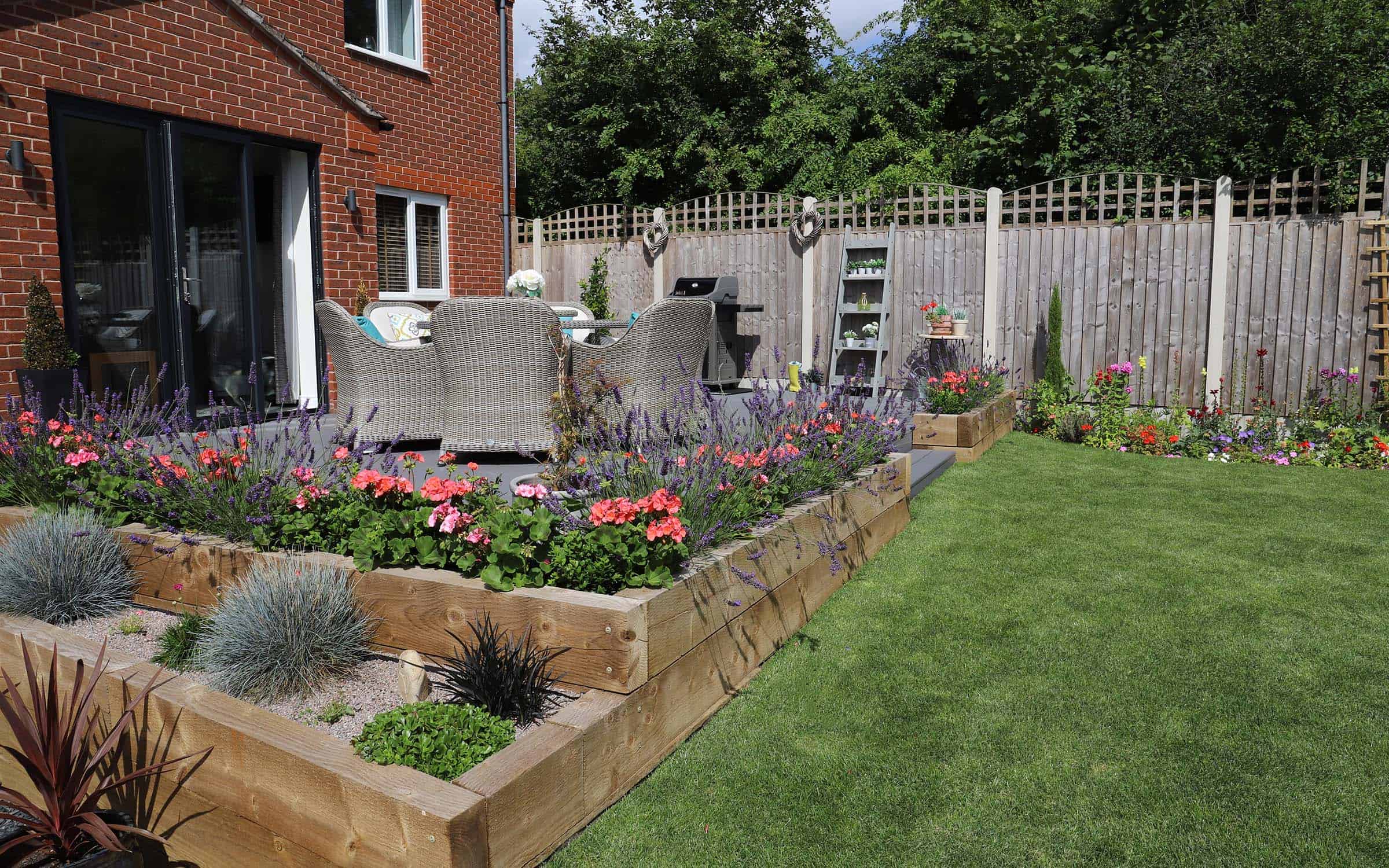We round-up some of the best sloping garden ideas for you to browse over before tackling your project.
An uneven garden can present us with many challenges when it comes to deck design. Finding the best layout to maximise your space and ensuring you have the space for a patio, deck or barbecue area can be an absolute pain, but you don’t have to do any of it alone.
In some cases, physically digging out the unevenness to give you a flat plateau is a simple, if not back-breaking option. However, if your garden has a more consistent sloping terrain you may have to be more imaginative and drastic in your approach.

Installing composite wood decking is an obvious solution; the ability to overcome slopes and bumps by anchoring posts and joists into the ground is a simple method of creating a level walking surface. This is just one way of negotiating the thorny issue of uneven ground.
Here are some handy hints as to how you might make your sloping garden more useful:
#1 – Determine The Gradient
Try to avoid laying lawn on a slope. As well as access issues, a sloping lawn will be a literal uphill struggle when it comes to mowing. If you’ve got a gradual slope, the installation of a rockery or timber planters will do a great job of holding back the earth. That way, you can easily level off your space in preparation for a lawn, patio, or composite deck.
#2 – Consider Terracing
Terracing is the perfect way to iron out the creases in your garden. Since the times of the ancient Inca tribes of Machu Picchu in Peru, people have been terracing the sides of hills and mountains for agriculture and access. Terracing is not something which should be undertaken lightly, however, as it’ll involve a large amount of digging out. You may even need to hire a skip. But, if you’re committed to terracing, go for it! You’ll be able to pull off some beautiful effects.

#3 – Create Your Own Zone
Terracing your garden seems limiting at first; the footprint of each level is made smaller, after all. However, terracing also allows you to approach your garden design with a zone-style strategy. This helps you to make the most of each section. Give each level its own mini-theme or identity. Experiment with a pergola to make a bold statement or install decking to fully utilise your space.
#4 – Material Mix-Up
Keep the design of your garden interesting by experimenting with timber sleepers, porcelain tiles, or even concrete retaining walls to terrace your garden. Concrete retaining walls have evolved from grey slabs to moulded panels, which are actually textured to resemble timber, slate, or stone. Concrete retaining walls offer a longer-lasting solution to timber sleepers, which are prone to rot. With the new designs and moulds, concrete retaining walls add a stunning aesthetic to your outdoor living theme.

#5 – Up Your Surface Game
When it comes to planning your seating area, there are a variety of options available to you.
- A stone slabbed patio is a solid and hardwearing surface that’s great for establishing a patio or dining area. Just make sure that, before laying a patio, your surface is completely flat. Raising it to accommodate height differences requires significant groundwork in establishing a strong concrete base.
- Ceramic tiles or mosaic tiles can be purchased in ornate patterns and styles. Similarly to stone slabs, however, they will need to be laid onto a completely flat surface with a concrete base. This once again demands significant groundwork, making it difficult to get started.
- A raised timber deck can account for variations in height and be extended across a void thanks to its raised subframe – one that can be adjusted to account for variations in height.
- A composite deck can offer all the benefits of the above and much more. Composite decking is a surprisingly robust alternative. While timber decking is relatively cheap to install, it is costly in terms of the time and effort required to maintain it. NeoTimber® composite decking offers a maintenance-free alternative to timber decking, giving the perfect base on which to establish your dining area.

Need Further Support or Advice?
If you’ve still got questions that have not been answered here, or you would like additional advice,
support or assistance then please give one of our friendly experts a call and we’ll be happy to help.
Just give us a call on 01530 382 180.
